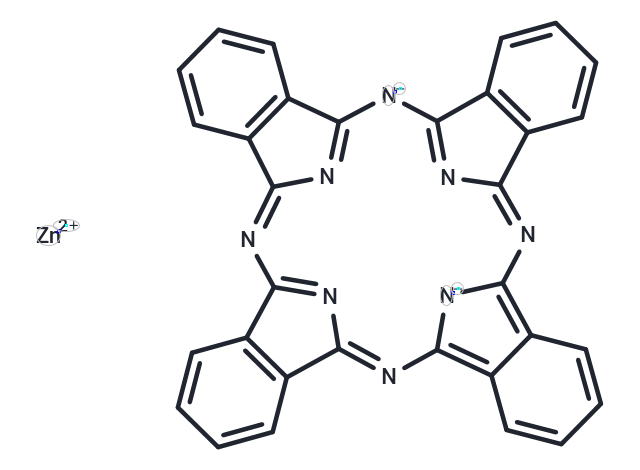Shopping Cart
Remove All Your shopping cart is currently empty
Your shopping cart is currently empty
Zinc phthalocyanine (ZnPc) are photosensitive,is commonly applied in industry (catalysts, photoconductors) and biomedical (photodynamic therapy).

| Pack Size | Price | USA Warehouse | Global Warehouse | Quantity |
|---|---|---|---|---|
| 500 mg | $29 | - | In Stock |
| Description | Zinc phthalocyanine (ZnPc) are photosensitive,is commonly applied in industry (catalysts, photoconductors) and biomedical (photodynamic therapy). |
| Cell Research | Instructions I. Photooxidation of cyclohexane: ZnPc, as a photosensitizer, shows high catalytic activity in the photooxidation reaction of cyclohexane. The basic reaction steps are as follows: 1. Prepare the reaction system: Dissolve ZnPc in an appropriate solvent, usually benzene or other organic solvents. The concentration of ZnPc is generally between 10-5 and 10-3 M, and the specific concentration depends on the experimental requirements. 2. Reaction conditions: Add cyclohexane and oxygen to the reaction vessel. Generally, ZnPc (as a photosensitizer) is added under an appropriate nitrogen atmosphere and kept at a low temperature (such as 5-10°C) to promote the oxidation reaction. 3. Irradiation light source: Use a light source of a specific wavelength (usually visible light or ultraviolet light), such as a xenon lamp, laser, etc., to irradiate the reaction mixture. ZnPc will produce singlet and triplet excited states under the excitation of light, thereby initiating an oxidation reaction. 4. Monitoring the reaction: Monitor the reaction products, such as the oxidation products of cyclohexene (such as cyclohexanol, cyclohexanone, etc.) by gas chromatography (GC) or mass spectrometry (MS). 2. Application of photodynamic therapy (PDT): ZnPc is used as a photosensitizer to produce singlet oxygen (1O2) by light excitation in PDT for the treatment of cancer and other diseases. ZnPc is generally incorporated into a drug carrier (such as liposomes) and injected into the patient. Under laser irradiation, the singlet oxygen produced by ZnPc excitation can effectively kill tumor cells or diseased tissues. 3. Industrial application: 1. In industry, ZnPc is widely used as a photoconductor and catalyst material in photoelectric conversion, dye-sensitized solar cells (DSSC) and other fields. 2. In catalytic applications, ZnPc is used as a catalyst or catalytic carrier, especially in photooxidation reactions with high efficiency. Notes 1. Solubility: ZnPc itself has poor solubility, so it is usually necessary to use organic solvents (such as dichloromethane, ethanol, etc.) to dissolve it. 2. Photosensitivity: ZnPc is highly sensitive to light, so it is necessary to avoid direct exposure to strong light and control the light source during operation. |
| Synonyms | ZnPc |
| Molecular Weight | 577.92 |
| Formula | C32H16N8Zn |
| Cas No. | 14320-04-8 |
| Smiles | [Zn++].c1ccc2c3nc(nc4nc([n-]c5nc(nc6[n-]c(n3)c3ccccc63)c3ccccc53)c3ccccc43)c2c1 |
| Relative Density. | 1.614 g/cm3. Temperature:20 °C.;1.62 g/cm3. Temperature:20 °C. |
| Color | Purple |
| Appearance | Solid |
| Storage | keep away from direct sunlight | Powder: -20°C for 3 years | In solvent: -80°C for 1 year | Shipping with blue ice/Shipping at ambient temperature. |
| Solubility Information | DMSO: Insoluble H2O: Insoluble |
| Size | Quantity | Unit Price | Amount | Operation |
|---|

Copyright © 2015-2026 TargetMol Chemicals Inc. All Rights Reserved.